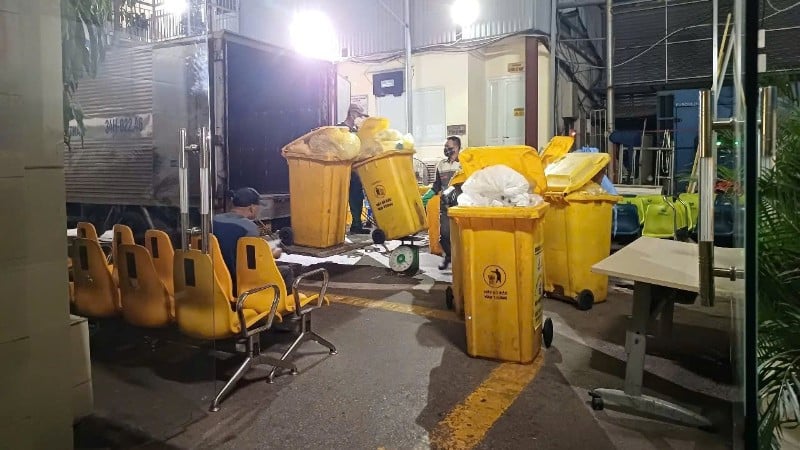
But in reality, in some places, waste classification at source is still a formality, storage areas do not meet technical requirements, transportation is not supervised, and treatment bidding is based on cheap prices... Therefore, the environment and public health are facing risks.
Lesson 1: Loopholes in collection and treatment
Every day, thousands of tons of medical waste, including a lot of infectious and hazardous waste, are generated from hospitals and clinics across the country. Although the law has sufficient regulations, implementation still reveals shortcomings.
No one knows where the medical waste goes.
According to regulations, medical facilities must have a plan to collect and treat medical waste and wastewater that meets technical standards before being allowed to operate. In reality, many facilities, although licensed, still collect and treat medical waste in an "ambiguous" manner.
According to the Hanoi Department of Health, there are about 4,000 private clinics, 46 public hospitals and 48 non-public hospitals in the area. While hospitals take the measures quite seriously, private clinics have many ways to cope. Currently, state-owned enterprises such as Hanoi Urban Environment Company Limited (Urenco) have only signed contracts with about 1,000 units, and only 60% of these generate waste and request collection. The remaining clinics have signed contracts with private enterprises.
Notably, more than 2,500 clinics are signed with environmental enterprises in Bac Ninh province. According to our research, many of these contracts are "contract" contracts with a value of only 3-5 million VND/year. These contracts are only a formality to legalize the licensing procedures, there is no actual collection. "The clinic has a license, the treatment unit has a contract, but no one knows where the medical waste generated every day goes" - a health official in Hanoi shared.
If each private clinic generates 0.5-1kg of medical waste per day and it is not collected properly, with thousands of facilities, Hanoi may have to bear tons of infectious waste that is quietly mixed into household waste or is processed manually, contrary to regulations.
If each private clinic generates 0.5-1kg of medical waste per day and is not collected properly, with thousands of facilities, Hanoi may have to bear tons of infectious waste that is quietly mixed into household waste or is processed manually, contrary to regulations. From needles, bandages to leftover medicine - all can become a source of spreading disease and destroying the environment if not controlled promptly.
At Phu Tho General Hospital, on average, each month the hospital generates about 14.7 tons of hazardous waste, 4.2 tons of recyclable waste and more than 67 tons of household waste. For each type of waste, the hospital signs a contract with ETC Environmental Joint Stock Company to collect and treat it.
Every year, the hospital organizes a bidding according to regulations, but for two consecutive years, this company still wins the bid. A problem worth pondering is that ETC Environment Joint Stock Company is simultaneously collecting, transporting and treating medical waste spread across (old) localities such as: Hoa Binh, Yen Bai, Lao Cai, Vinh Phuc and Hanoi. Meanwhile, the company's waste treatment site is located in (old) Nam Dinh province, which means that each collection truck has to travel hundreds of kilometers, and the transportation cost is more expensive than the treatment cost.
This raises questions about actual capacity and economic efficiency. A representative of an environmental enterprise in Hanoi was upset: “Some enterprises have treatment facilities outside the province, specialized vehicles travel hundreds of kilometers to collect, but with such low prices, there is no profit. I don’t understand how they do it?”
According to experts' analysis, medical waste is light in weight, but the requirements for specialized standards make the transportation efficiency very low. With a specialized truck with a load capacity of 5 tons, under normal conditions it can carry 4-5 tons of household waste. However, if used to transport medical waste, the truck can only carry about 1 ton, leading to the cost per kilogram of waste being increased many times.
In addition, the authorities completely lack a mechanism for actual monitoring. Many medical facilities do not know the final processing procedure, do not have data on the transportation route, and do not even know whether the processing unit is actually operating or not.
According to Mr. Duong Tri Nam, Deputy Director of the Department of Disease Prevention, Ministry of Health, the inspection of compliance with legal regulations on medical waste management and environmental protection is only carried out within the premises of medical facilities and at hospitals and clinics under the Department of Health, Ministry of Health. Monitoring activities are mostly integrated into hospital quality inspection. The Ministry of Health is not assigned the responsibility of specialized inspection of compliance with environmental protection laws.
Need to ensure costs for waste treatment
Associate Professor, Dr. Nguyen Viet Hung, Vice President of the Vietnam Infection Control Association, said that Vietnam currently has a legal framework for medical waste management, but the classification of infectious waste, plastic waste, and ordinary waste is still a movement. Commitments to reduce and recycle are signed but not put into practice. Treatment technology and support projects are available, but are not implemented due to indifference and lack of interest from unit leaders.
Currently, Vietnam has a legal framework for medical waste management, but the classification of infectious waste, plastic waste, and general waste is still a movement. Commitments to reduce and recycle have been signed but not implemented.
Associate Professor, Dr. Nguyen Viet Hung,
Vice President of Vietnam Infection Control Association
Mr. Hung gave an example from Bach Mai Hospital, which generates up to 1.5 tons of hazardous waste per day: If we invest in a modern autoclave, worth about 10 billion VND to convert hazardous waste into regular waste, we can sell it to recycling facilities and recover the capital in 2-3 years. But this proposal has not yet come true.
Another major bottleneck is that waste treatment costs have not been transparently accounted for by the Ministry of Health and have not been included in separate items in hospital financial reports, although in principle, waste treatment costs have been included in the standards for establishing medical service prices.
According to infection control experts, each time a bandage is changed or stitches are removed, a certain amount of waste is generated; each hospital bed has a corresponding amount of household waste and infectious waste, and even each time a patient is examined, to calculate the price of the examination, the doctor will be charged twice for hand hygiene, washing hands before and after the examination. Each time the hands are cleaned, the Ministry of Health continues to stipulate 3-5ml of chemicals, even the price of chemicals is calculated as the price of foreign chemicals to be included in the price structure, and each time like that, a certain amount of waste will be generated...
Therefore, according to infection control experts, if properly calculated, the provision for infection control activities will not be lower than 30% of total revenue. With this source of revenue, hospital facilities will have the opportunity to reinvest in machinery and equipment to protect the environment. However, currently, hospitals or clinics tend to invest in diagnostic machinery - which brings in revenue, while wastewater treatment systems or infection control are not given attention.
Source: https://nhandan.vn/bat-cap-xu-ly-chat-thai-y-te-post920642.html


![[Photo] Panorama of the Patriotic Emulation Congress of Nhan Dan Newspaper for the period 2025-2030](https://vphoto.vietnam.vn/thumb/1200x675/vietnam/resource/IMAGE/2025/11/04/1762252775462_ndo_br_dhthiduayeuncbaond-6125-jpg.webp)
![[Photo] The road connecting Dong Nai with Ho Chi Minh City is still unfinished after 5 years of construction.](https://vphoto.vietnam.vn/thumb/1200x675/vietnam/resource/IMAGE/2025/11/04/1762241675985_ndo_br_dji-20251104104418-0635-d-resize-1295-jpg.webp)

![[Photo] Opening of the 14th Conference of the 13th Party Central Committee](https://vphoto.vietnam.vn/thumb/1200x675/vietnam/resource/IMAGE/2025/11/05/1762310995216_a5-bnd-5742-5255-jpg.webp)




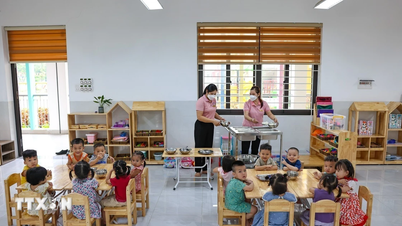



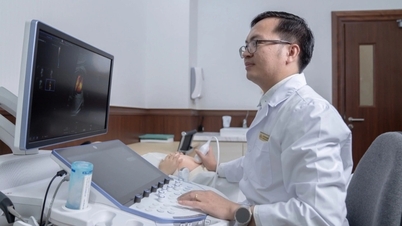









![[Video] 5 specific requests for comments on the draft documents of the 14th Congress](https://vphoto.vietnam.vn/thumb/402x226/vietnam/resource/IMAGE/2025/11/05/1762302892217_dung01-03-26-03still014-jpg.webp)





















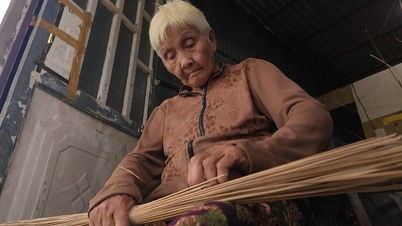













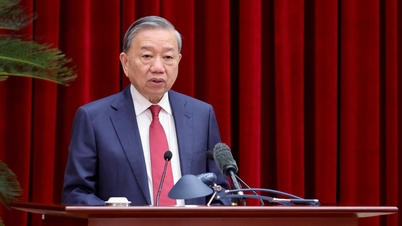
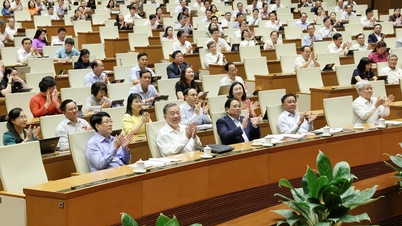








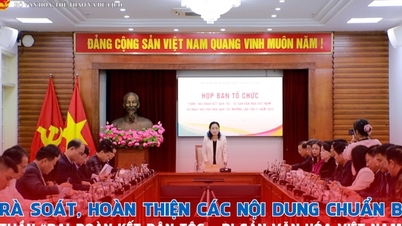
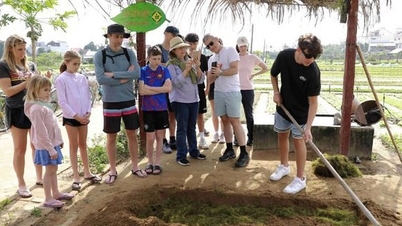


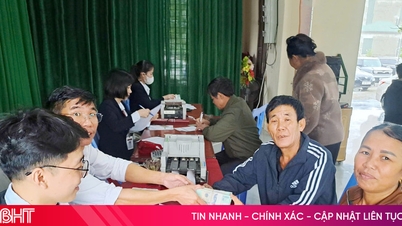

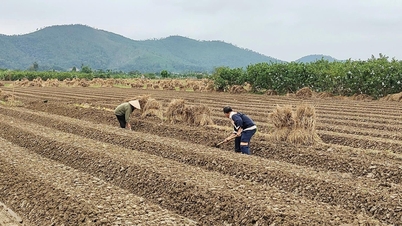




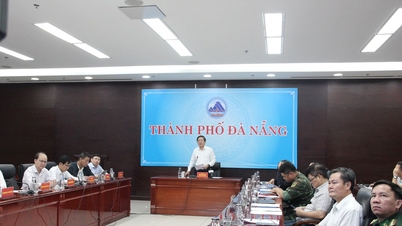

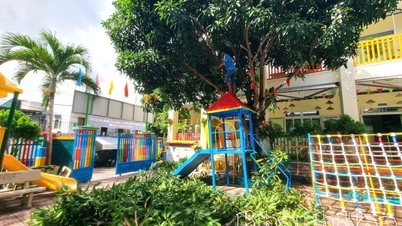















Comment (0)